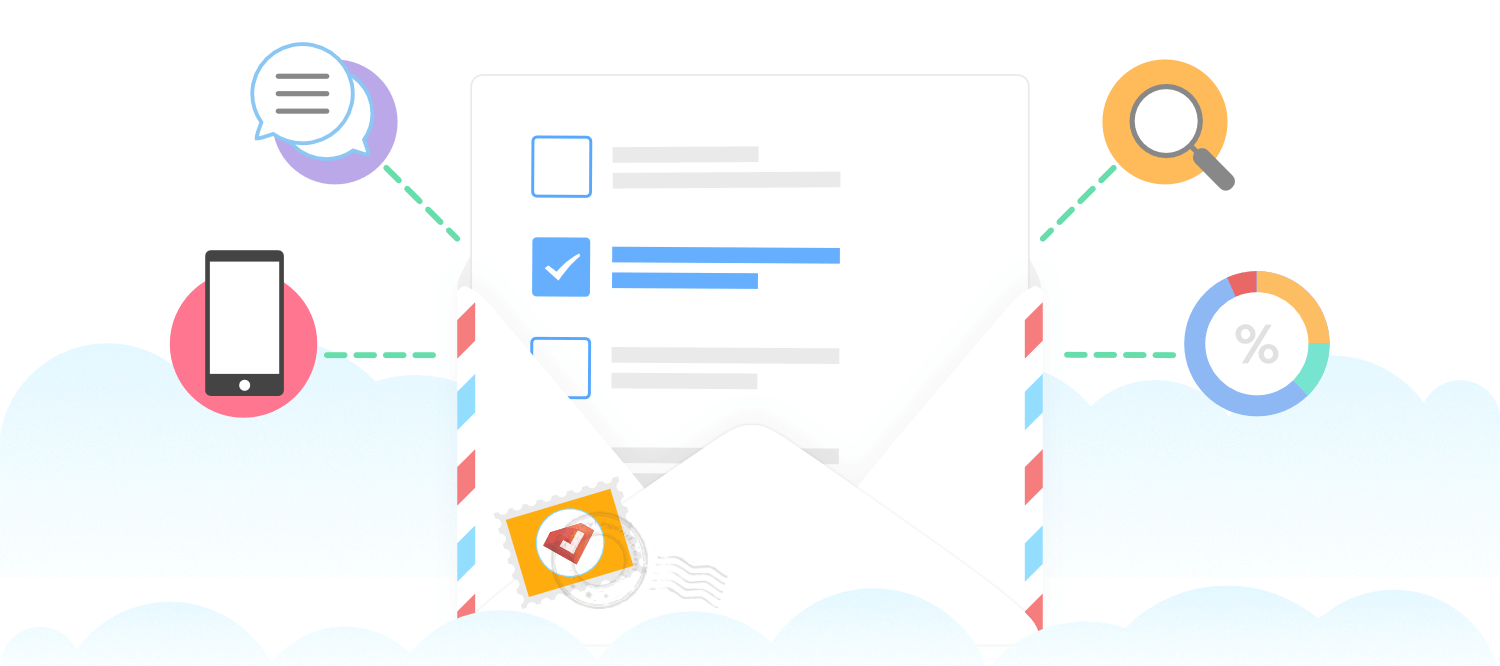Create your free survey, form or poll now
Get feedback to learn and grow
Getting feedback can sometimes be experienced as ‘stressful’ or ‘irritating’. This is why we often hesitate to get feedback from others. As experts mention in “Find the Coaching in Criticism”, published at Harvard Business Review, “Even when you know that [feedback is] essential to your development and you trust that the person delivering it wants you to succeed, it can activate psychological triggers. You might feel misjudged, ill-used, and sometimes threatened to your very core.”
But according to the same article, the good news is that you can easily overcome this psychological states of mind and become a better receiver, simply by asking for feedback more often, and by applying the a few useful tips in the feedback collection process, which will be described further down.
Before starting to collect feedback, keep in mind that according to experts, those who clearly seek critical feedback tend to get higher performance ratings. One reason is of course because of the nature of getting feedback and becoming better. But also, when you ask for feedback, you not only understand how others see you, you also change the way they see you! Just the act of collecting feedback makes people trust and respect you more; and helps you create a better image of yourself for them.
Consider these handy tips, when you get feedback
1. Know your own tendencies
For sure we have been constantly receiving feedback since we can remember. But we can definitely remember one more thing as well: wow do we usually react, when we get feedback?
Some might get angry and strike back. Others may go into a defensive mode, and try to justify their actions and decisions by all means. And some people may receive the feedback for the moment, and reject it again after a few hours.
We all react in different ways, but by knowing our own common ways of reacting to feedback, we can differentiate between a psychological impulse and a fact, more easily. This will help us judge better, and evaluate the feedback.
2. Detach the “what” from the “who”
As a matter of fact, our relationship with the person who is giving the feedback affects how we receive the feedback. How we feel about the messenger often alters how we perceive the meaning of the message.
It’s great to disconnect these two, and focus on the feedback itself, and the goal that you’re moving towards.
An advantage of using online surveys is that you can get feedback anonymously; and in this way reduce the effect of your personal relationship with the feedback-giver. Additionally, being anonymous will provide the feedback-givers the opportunity of giving more honest feedback.
3. Get more of the “coaching” feedback type
When you ask someone to rate something, for example when you want to measure your company’s Net Promoter Score, you’ll be getting “evaluative” type of feedback; simply a score. But when you ask them about their reasons for giving you that specific score, you will be receiving “coaching” type of feedback.
Everyone would need to get both types of feedback; but it is actually the “coaching” type that makes you or the subject that you are evaluating, improve and become better.
4. Analyze the feedback
Sometimes, it’s not directly clear if the feedback is valid or useful. Therefore it’s important to unpack and analyze the feedback to better understand it. If a respondent’s answers are very short or not clear enough, try to connect them with their previous answers. See if you can make a connection between them. Have they understood your question correctly? Have they simply been lazy to provide a good response. Are they unconfident and worried to answer honestly? Are there too many questions that have made them tired? Are you asking the right question from the right person?
Analyzing all these may help you figure out the meaning or the message within the feedback. Observe closely, where the answers are coming from and where they are heading to.
5. Get feedback on one subject, every time
Do not make huge surveys or questionnaires, that contain questions about variety of things. For example, if you’re making a survey for your employees, student, etc.. do not wait until you can make an annual performance review survey. It’s not good to as respondents to give you feedback about different aspects of a huge multi-aspect subject.
Although it is good to include an open-ended question at the end of your survey and let the respondents to freely express their opinions about other things that have come to their mind during the survey, but try to make the actual process of getting feedback, focused around the same subject.
6. Test your theories, with small experiments
After analyzing the feedback, try to design small experiments to test the theories which you have achieved from it. If the experiments work, that’s awesome! If not, tweak your approach and test it again. Small experiments do not have a huge risk, and when you study them one by one, it will be easier to follow and track the results.
7. Conduct an online survey
Conducting online surveys for example using our free online survey tool, is a perfect way to getfeedback. Because you can share the surveys with your respondents in a variety of different ways. For example share the link to your survey via email, SMS, Facebook, Twitter, and so on…, embed them into your site, or even print it in form of QRC codes and ask visitors of your business to answer a few questions. It’s also possible to make a kiosk-mode survey and display in on an iPad or a tablet in your shop, and get live feedback from your customers.
Using our tool will even help you collect additional data from respondents, for instance which time of the day they answer your survey; how long it took them to respond, or even from which country or city are they filling in the questionnaire. All these might be meaningful, when you analyze the results.
8. Get feedback in real-time
Don’t wait and waste time, if you want to evaluate your performance in a particular task; or about a specific subject. Just reach out to your audience while the subject is still fresh, and get their feedback right away!
But keep in mind not to bombard them with questions from every angle and in regard to every possible aspect of the subject. Divide the questions into manageable chunks; and if you need to create a few different survey, ask them to participate in new ones after a reasonable pause.
9. Ask more frequently
Get feedback regularly. Don’t let the good habit of listening, learning, and changing for the best get old. The more you ask, the easier it becomes to learn and take the feedback.
10. Give feedback
Yes, you should give feedback too. Let your respondents know about the results of your survey. Share the analytics of your survey with them. Ask for their email addresses, and see if they want to hear more about the results. Write to them after the survey; thank them; and show appreciation. After a while, let them know about the results of considering their opinions and applying their valuable feedback.
When you get feedback, give feedback too; and let them know that you, your company, or organization cares about the give feedback.
Summary
Don’t forget that getting feedback, or actually “taking” the feedback is not an easy process. But no one is perfect! Feedback always helps, and it all depends on your ability to achieve positive results from criticism.
For you who owns a business, understanding your customers opinions about your products and services will improve quality of them, but will also provides you with valuable insights into what new products or services your customers demand from you.
 Some templates which can help you get feedback
Some templates which can help you get feedback
Motivation and buying feedback template
Non-Profit Donor feedback template
Student satisfaction feedback template
Product feedback template
User experience feedback template
Post-healthcare-visit feedback template




